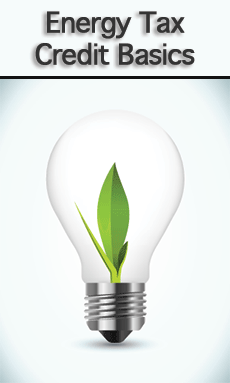 Most forms of home improvement will increase your equity. Energy efficiency tax credits enable you to do this and save on tax. Any qualifying energy efficiency improvements you made to your home in 2013 can be claimed in your 2014 tax return for 2013. Here is how this can be done, and what improvements are qualified.
Most forms of home improvement will increase your equity. Energy efficiency tax credits enable you to do this and save on tax. Any qualifying energy efficiency improvements you made to your home in 2013 can be claimed in your 2014 tax return for 2013. Here is how this can be done, and what improvements are qualified.
Home Improvement Equipment
The Energy Efficiency Tax Credit Act details a number of classes of energy-efficient equipment. By installing any of these in your home you can get tax relief in your next return – the more you install, the more tax relief you get. Here are just some of the categories of equipment involved:
• Insulation: You may claim tax against 10% of the cost of the insulation materials but not the installation costs. This includes cavity wall and loft insulation.
• Roofing: The same 10% can be claimed for roofing that is designed to keep your home cool.
• Water Heating: If you install water heaters run on oil, natural gas or propane with a thermal efficiency of 90% or more or an Energy Factor of 0.82 or more, you can claim $300.
• Water Boilers: A hot water boiler or furnace operated by one the same fuels as above, and with an Annual Fuel Utilization Efficiency Rate (AFUE) of at least 95%: you can claim $150.
• Doors & Windows: Installing exterior doors and windows, double glazed to retain heat, enables you to claim 10% of their cost. Windows are capped at a total of $300 and doors & skylights at $500.
• HVAC: you can claim 10% of the cost of HVAC units and $300 on air source heat pumps.
• Biomass stoves: $300 if you install a biomass stove running on pellets or woodchips. It must run at a thermal efficiency of 75%
If any of this home improvement equipment was installed in your home in 2012 or 2013, you can claim them in your 2014 tax return. They not only offer you more insulation and lower energy bills, but also increase the worth of your home. They must be installed only in your main residence.
However, the maximum you can claim is $500 in total from 2006 to December 31st, 2013. It may not be the bargain you thought it was, although competition might drive the prices down – and a tax claim is a tax claim!
No Upper Limit Claims
You can claim 30% of the cost of the following energy efficient systems with no upper limit for your combined claim:
• Wind Turbines: For a residential electrical supply.
• Solar Panels: Again as a residential electricity supply
• Geothermal Heat Pumps: These transfer natural heat from the earth to your home.
• Fuel cells: Fuel cells with generation efficiency of over 30% and a capacity of 0.5 KW. For fuel cells, the claim is restricted to $500. Hydrogen gas, natural gas and methane are the most common fuels for these.
For the above four energy efficient systems, they may be installed in either your primary or your secondary residences.
How to Claim Energy Efficient Tax Credits
You need a statement of certification from the equipment supplier, certifying that it meets the specs for the energy efficient tax credits. You also require Form 5695 dated for the year of your claim. This form provides all the information you need to make your claim. Then you need form 1040, into which you should enter the total you are claiming. You are permitted a total claim of $500 for all time. That is the maximum you can ever claim.
This form of home improvement is more important for the increase in the value of your home than for the $500 you can claim off your tax. The higher equity enables you get a higher second mortgage and might even enable you to sell up when you retire and buy a smaller home without a mortgage.
Energy efficiency tax credits are worth applying for if you are able to finance the equipment concerned. This type of home improvement also reduces your energy bills and saves you money.


About The Author: Karengustin
More posts by karengustin